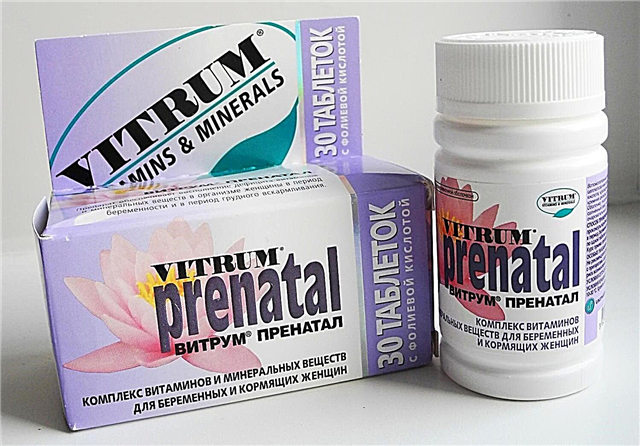
There are no people in the world who are not prescribed blood tests. Such laboratory diagnostics is carried out not only for sick children, but also for completely healthy ones - for preventive purposes. And all because a clinical blood test is a very informative and accurate method that allows you to identify violations in the child's body at the very initial stages. The well-known children's doctor Yevgeny Komarovsky tells about what tests are and how they are deciphered.
The essence of the diagnosis
Under the general and popular name "blood test" there is a great variety of laboratory tests. There is a general analysis and biochemical, there is an immunological examination, and there are tests for very specific infectious diseases. In total, there are more than a hundred different parameters that can be determined in the blood of a small patient. The doctor prescribes in a given situation exactly the analysis, the results of which are necessary for him to establish an accurate diagnosis.

Blood is a constantly changing liquid medium consisting of plasma and corpuscles. Each type of blood cell has specific functions. So, leukocytes are responsible for protecting the body, and therefore, with inflammation or other ailment, their number increases. Erythrocytes are "transport" for oxygen, and platelets provide blood clotting at the required rate.
When conducting a clinical blood test, it is of great importance to identify the ratio of the number of certain cells. If, for example, there was bleeding and the child has lost a lot of blood, erythrocytes increase, and if blood clotting is impaired, platelets decrease or increase. Thus, the numbers as a result of the analysis exist for a reason. For the doctor, they represent the most important information that characterizes the characteristics of the functioning of the body as a whole.
A clinical blood test is a general analysis or CBC, as pediatricians abbreviate it, referring the baby to the laboratory. Also, no one explains to parents that the very concept of "norm" in children is completely different, not the same as in adults. In the form where the laboratory technicians enter the results of the blood composition test, the norms are presented only for adults, since the form itself is approved by the Ministry of Health. Children's form with children's norms does not exist in nature. This explains the excessive anxiety of mothers who compare the results of the child with the printed standards (adults) and find a lot of deviations.


How to take?
Evgeny Komarovsky recommends preparing for the blood test, especially for parents. Since the composition of the blood is in direct relationship with what the little one ate and whether he ate at all. It is better to donate blood on an empty stomach and in the morning. This may require some effort - to persuade the child to go to the clinic without breakfast, since at home they do not collect material for close laboratory study.
Blood can be taken either venous - from a vein, or capillary (from a finger). For general analysis, both options are acceptable. If the material is taken from the finger (which happens most often), then the scarifier must be used sterile, disposable. The same requirement applies to equipment for the collection of venous blood. If the child has to donate blood several times during the illness (for monitoring, assessing the dynamics of therapy, etc.), then it is best to create similar conditions - donate blood every time at the same timethis will give you more accurate results.

Decoding - how to understand what is written there?
This question is the most pressing for mothers and grandmothers. On the one hand, parents are not at all obliged to study all complex medical terms and norms, but on the other hand, everything related to the child's health is very interesting. Komarovsky talks about how to independently understand the complex terms of a clinical blood test form. You need to start with basic concepts, with which professional decoding always begins.
Hemoglobin
It is a protein that is found inside the largest red blood cells - erythrocytes. It performs transport functions - it delivers oxygen to the organs, takes away the oxygen decomposition product - carbon dioxide. Hemoglobin contains a separate component that is not related to proteins, called heme. Heme is the home of iron, its sole function is to provide blood with a certain color, naturally red.
To understand whether a baby has enough hemoglobin of the desired protein, the concentration of protein in grams per liter of liquid is determined in laboratory conditions. If mom and dad in an adult state have different normal hemoglobin concentrations, then in children, regardless of gender, the norms are the same.
True, in infants in the very first weeks of life, the concentration of the desired protein in the blood often goes off scale, and this is normal.


Erythrocytes
When conducting a clinical study of the blood of a toddler, the laboratory assistant has the task of counting the number of red blood cells per liter of blood. They are counted under a powerful microscope, and the result obtained is converted to a liter of liquid. If you write down the resulting number from the analysis form, the form itself needs to be increased several times, since the result is obtained with twelve zeros. Therefore, the data is reduced. Also in the form indicate the average content of hemoglobin in one erythrocyte. For this, the previously indicated hemoglobin parameter is simply divided by the number of red blood cells, which are counted under a microscope.
Hematocrit
Since blood is a corpuscular element in plasma, the hematocrit is the ratio of plasma to corpuscular elements. In order not to think for a long time why such a ratio needs to be calculated, Komarovsky advises to present a compote. The ratio of fruits and berries in it and water is the hematocrit. To make it clearer, the hematocrit itself determines the density of the blood (in percentage).

ESR and other indicators of erythrocytes
The erythrocyte sedimentation rate (ESR) is another ability of the largest blood cells, which is used to judge the state of health in general. Disturbances and deviations in ESR and other parameters of erythrocytes are clinically important for the diagnosis of anemia in a child, some blood diseases. These indicators in themselves do not speak of the presence of a virus or bacteria.
Although as a result of any long-term illness, the blood thickens somewhat, in this regard, after the flu or SARS, in which the baby has a fever, erythrocytes, hemoglobin will increase and the hematocrit will change. But with the inflammatory process, an increase in ESR occurs in the blood. For this reason, Komarovsky urges mothers not to rejoice if suddenly, during the illness or after it, the baby has high hemoglobin.
This is not a sign of excellent health, as many think, but a sign of thickening of the blood, and therefore frequent warm drinking is shown to the little one, which will help correct the hematocrit. The average norm of hemoglobin in the blood of a baby up to 1 month is 160-200 g / l, at the age of up to 5 years - 110-140 g / l, and then - 120-140 g / l. The total number of erythrocytes at the age of 1 month reaches 4-5X10 ^ 12, per year and further - 4-4.5X10 ^ 12. The hematocrit at 1 month is usually 45%, at 1 year - 35%, at 5 years - 37%, and at 10 years - 39%.
Do I need to worry if the real ones shown are far from the standards? Komarovsky does not advise doing this, since the norms are very, very nominal. They can differ even in perfectly healthy children.


Platelets
These cells are an important component of the blood coagulation system. If there are few of them, the blood will coagulate more slowly when injured or cut, which threatens the development of bleeding. These cells, like erythrocytes, are measured by the number per standard liter of blood. The norms in childhood are rather blurred - from 10,010 g / l to 40,010 g / l. High platelets indicate too thick blood, in which it is possible that blood clots form inside the blood vessels. This happens infrequently in children.
Leukocytes
Evgeny Komarovsky advises parents to pay attention to these blood cells, since this is a rather informative section of decoding a child's blood test. In the blood, leukocytes act as the official representative of immunity. Since the immune system reacts sharply to any changes in the state of health, this is immediately reflected in the concentration of leukocytes.
Babies always have much more of these protective "fighting" cells in their blood than adults. This can be explained by the fact that the child's immunity is constantly in the process of learning, formation and development. If a child has an increase in the level of such cells, then they talk about the presence of leukocytosis, if there are few protective cells, then they talk about leukopenia. The causes of leukocytosis can be a variety of bacterial ailments, purulent inflammatory processes, hypoxia. But a deficiency of leukocytes (leukopenia) is usually observed with a viral infection, with poisoning and other toxic conditions.


Leukocytes have many forms and types, each differs in its functions, and therefore several types of these protective blood cells are indicated in the analysis form, the exact amount of each type will help to find out what exactly happened to the baby - his immunity is fighting a virus or bacterium, is there a pathological decrease or increased immune responses. The percentage of different types of leukocytes is called the leukocyte formula.
The number of neutrophils in the child's blood is determined. This is a type of protective cells that are capable of attacking a virus, a bacterium. Segmental-nuclear neutrophils are considered the strongest. When there is a danger to the body, they appear in the blood first. The more severe the child's condition, the more neutrophils will be found in his blood, and not segmental-nuclear, but stab. In a very serious condition of the baby, both metamyelocytes and myelocytes are determined in the blood.
Leukocytes eosinophils are needed to neutralize allergens. Therefore, their amount in the blood increases during periods of exacerbation of an allergic reaction or during infection with parasites. Basophils are the most mysterious of leukocytes. Their purpose is not fully understood, but they are determined in rare diseases.
In a healthy child, as a rule, they are not found in the blood. Lymphocytes are also active participants in immune processes. The younger the child, the more such cells will be present in the blood.


Difficulties in diagnosis
Something like this, in a simplified form, looks like the UAC. But in practice, moms may face other data. For example, in the laboratory there is a large amount of work, and the laboratory assistant does not determine all of the above indicators, limiting himself only to the basic ones. Sometimes there is no corresponding equipment. Due to the optimization of the healthcare system, there are not enough laboratory diagnostics doctors, and therefore often in children's clinics they are limited only to the determination of hemoglobin, ESR and the total number of leukocytes.
It should be noted that, despite the high accuracy, a clinical blood test without an experienced doctor who can correctly interpret the results obtained is of no value. An experienced specialist, looking at the form from the laboratory, will be able to determine with high accuracy what the baby is sick with - a bacterial or viral ailment, whether there is inflammation, how serious and extensive it is, whether the immune system is working as it should. But to determine blood sugar, the ratio of vitamins and micro- and macroelements, another analysis will help - a biochemical one, and this is a completely different story.
Tips
Yevgeny Komarovsky advises parents to take a general blood test very seriously, if the doctor gives such a referral, then you need to donate blood and find answers to questions that the doctor also has. If a child is sick, and the pediatrician does not prescribe a CBC, you should check with him whether such a study is necessary. The fact is that sometimes the management of polyclinics limits the number of laboratory tests, and then less and less serious cases of childhood diseases are limited only to the visual diagnosis of the local doctor. It is better to do the analysis, even if this requires you to go to another laboratory or donate blood on a paid basis.
Evgeny Komarovsky urges moms and dads not to try to interpret the test results on their own, since not even every doctor with a medical education can do this task. Seeing low or high values on the form, you do not need to panic.
But you need to ask the doctor the appropriate question at least for your own reassurance. According to the law, a health worker must give comprehensive explanations on all issues that arise. The modern pediatric school also adheres to this rule.


What is it - a clinical blood test? What are its benefits? What interesting things can you learn by doing such an analysis? And why is it so often prescribed by some doctors? The answers to all these questions are waiting for you in the next video from Dr. Komarovsky.



